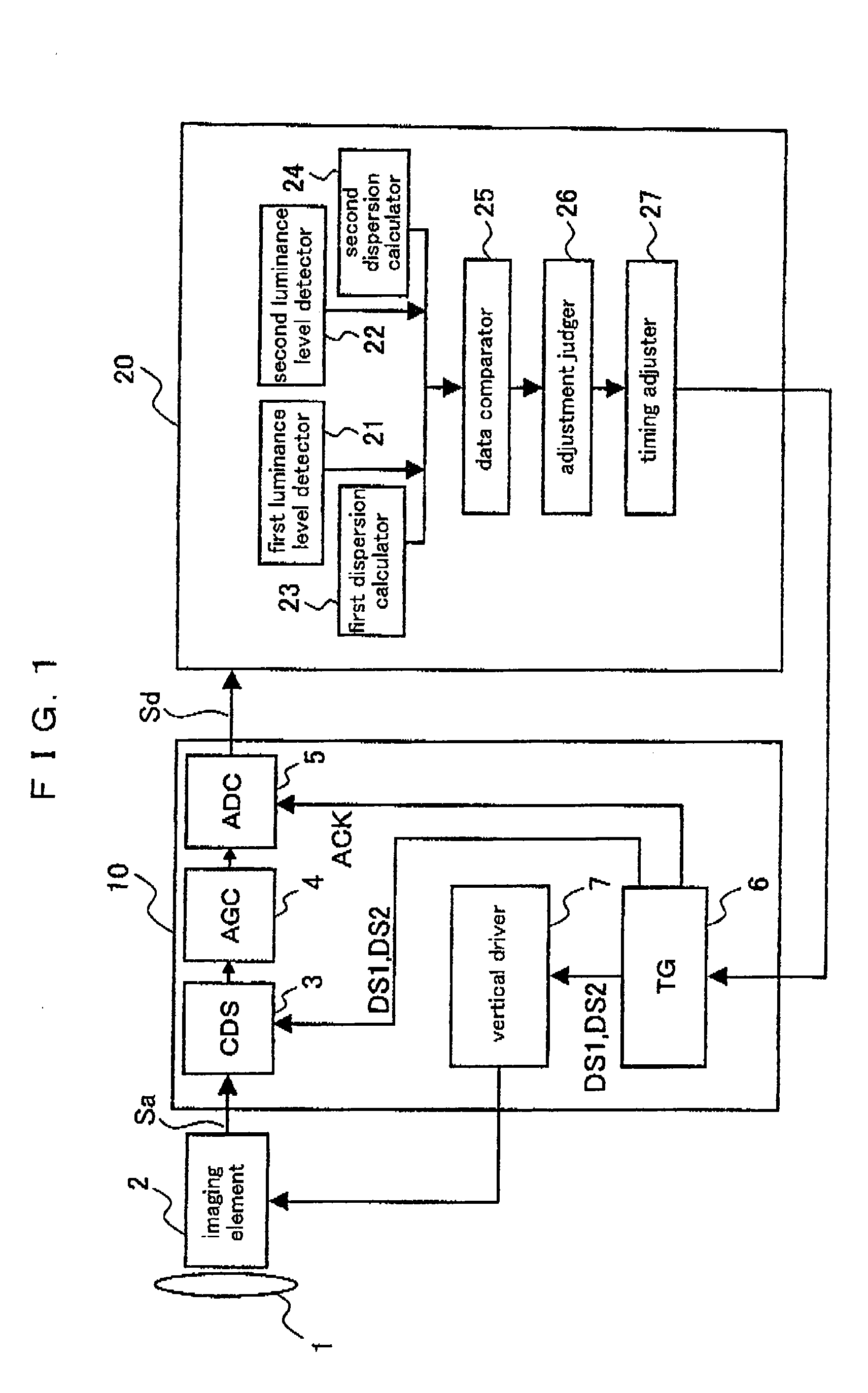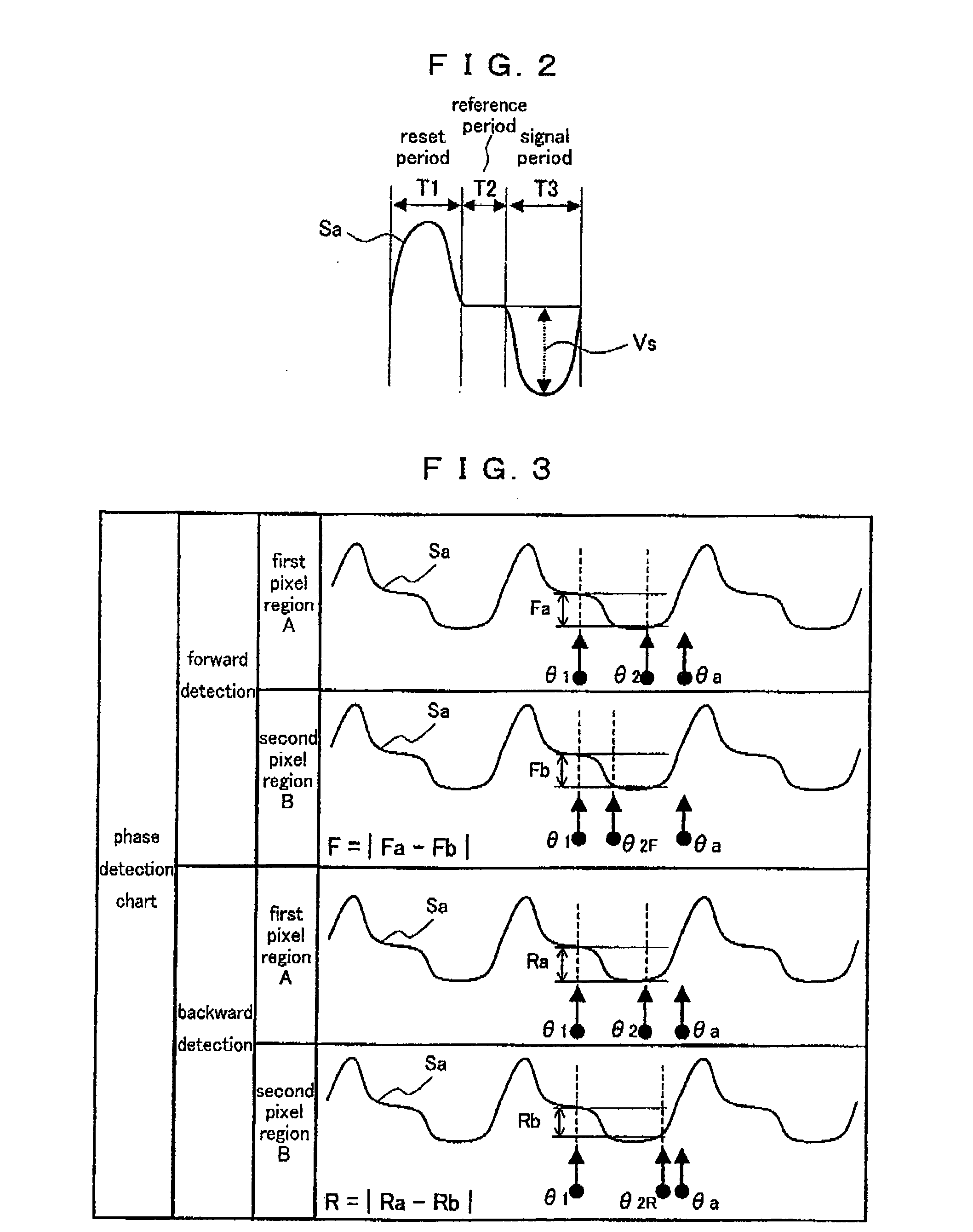Phase adjustment device and digital camera
- Summary
- Abstract
- Description
- Claims
- Application Information
AI Technical Summary
Benefits of technology
Problems solved by technology
Method used
Image
Examples
embodiment 1
Preferred Embodiment 1
[0083]FIG. 1 is a block diagram illustrating an overall constitution of a digital camera according to a preferred embodiment 1 of the present invention. The digital camera according to the present preferred embodiment comprises an optical lens 1 for collecting light of a photographic subject on an imaging element, an imaging element 2 for obtaining an image of the photographic subject whose light is collected by the optical lens 1 (CCD is given as an example in the description below), an analog front end 10 providing predetermined processes to an imaging signal Sa (image data) outputted from the imaging element 2 and converting the processed signal into a digital imaging signal Sd, and a DSP (Digital Signal Processor) 20 for generating a video signal after providing predetermined processes (color correction, YC processing and the like) to the digital imaging signal Sd outputted from the analog front end 10.
[0084]The analog front end 20 comprises a correlated do...
embodiment 2
Preferred Embodiment 2
[0124]FIG. 8A is a flow chart of phase adjustment operations in a phase adjustment device according to a preferred embodiment 2 of the present invention. FIG. 8B is a condition table used in a phase changing method. These drawings correspond to FIGS. 7A and 7B according to the preferred embodiment 1. In the preferred embodiment 1, the luminance level difference between the first and second pixel regions A and B itself is used for the detection of the phase shift. In the present preferred embodiment, a ratio of the foregoing luminance level difference relative to the luminance level in the first pixel region A is used. Below is given a description. Steps S21 and S22 according to the present preferred embodiment are the same as the Steps S11 and S12 according to the preferred embodiment 1 (FIG. 7A). Therefore, the description thereof is omitted.
[0125]In Step S23, luminance level ratios Ratio F in the forward detection and Ratio R in the backward detection are cal...
embodiment 3
Preferred Embodiment 3
[0137]In the preferred embodiments 1 and 2, the phase shift is detected based on the luminance level difference. In a preferred embodiment 3 of the present invention, not the luminance level but the dispersion of the luminance level is used. More specifically, in the forward detection, a difference between the dispersion in the first pixel region A obtained by the first dispersion calculator 23 and the dispersion in the second pixel region B obtained by the second dispersion calculator 24 is calculated. Further, a difference between the dispersion in the first pixel region A and the dispersion in the second pixel region B is similarly calculated in the backward detection as well. A result of the comparison of the dispersion difference in the forward detection to a dispersion difference threshold value and a result of the comparison of the dispersion difference in the backward detection to the dispersion difference threshold value are checked against a condition...
PUM
 Login to View More
Login to View More Abstract
Description
Claims
Application Information
 Login to View More
Login to View More - R&D
- Intellectual Property
- Life Sciences
- Materials
- Tech Scout
- Unparalleled Data Quality
- Higher Quality Content
- 60% Fewer Hallucinations
Browse by: Latest US Patents, China's latest patents, Technical Efficacy Thesaurus, Application Domain, Technology Topic, Popular Technical Reports.
© 2025 PatSnap. All rights reserved.Legal|Privacy policy|Modern Slavery Act Transparency Statement|Sitemap|About US| Contact US: help@patsnap.com



